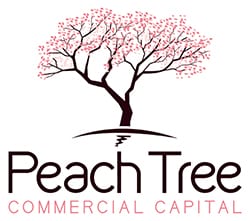As we close out Q3 of 2024 and head into Q4, you might be considering a few debt adjustments to your budget. In light of end-of-year predictions, it could be time to refinance and lower those obligations. Whether refinancing is right for your business depends on your reasons for wanting to refinance and the current state of your business. You don’t have to wait for the results of the Fed’s September meeting to start preparing.
State of the Market
So far this year, the Fed has only changed interest rates one time for the better or worse. However, the FED decided in September to implement its first rate cut of 50 basis points or half of 1%. Some economists expected only a 25 basis point reduction, while others anticipated 50. The change drops the Prime Rate from the 8.5% we’ve seen since July last year to 8%. It is also the only decrease expected in 2024.
The Congressional Business Office, which provides budget analysis for Congress, projects a 3.9% unemployment rate and 2.7% inflation for Q4. It also expects economic growth to slow over the next two years. Financial advising firm Vanguard expects a key measure of inflation, called the core PCE index, to go up from its current rate of 2.6%, affected by past year price comparisons. The labor market, however, should remain strong for the rest of the year.
What That Means for Refinancing
Given the economic forecast for Q4, it’s time for businesses to gear up for a refinance as a rate cut in September could lead to better than current borrowing terms. As inflation drops, companies might face lower input costs, but not necessarily enough to offset debt. Refinancing debt can help businesses manage it more effectively. Given the expected slower economic growth, locking in a lower interest rate through refinancing before the end of the year could be a prudent move. This ensures lower debt service costs in a potentially less robust economy.
Refinancing Benefits
If you’re on the fence about refinancing, there are significant cost savings to be had if you do:
- As your current debt becomes due, you may be expected to provide a balloon payment to close it out, depending on the type of loan. However, if current economic conditions make that unviable for your business, refinancing can help you avoid it.
- Having high-interest loans can drop your credit score. When you refinance to a lower-rate loan, it can boost your score. If your business was new when you got your original loan, having built more experience since then may mean you qualify for a lower interest rate.
- If your current loan isn’t serving your purposes anymore, you can change the type of loan you have by refinancing. For example, shake off the high-interest debt from short-term financing by refinancing with a long-term mortgage.
- Refinancing from floating to fixed-rate loans can lock in rates before they rise again. Fixed rates also make it easier to plan and budget, knowing exactly how much you’ll need for every payment.
- You can access equity with a cash-out refinance to fund expansion projects. The new loan, based on your current equity, pays off the original loan, plus provides liquid capital.
As a whole, the more businesses are looking to refinance, the more lenders are pressured to offer competitive rates, which benefits you and other small businesses.
Refinancing Example
Many new small businesses opt for merchant cash advances to help them with short-term capital injection. With a merchant cash advance, you receive money quickly without enduring a rigorous qualification process. In exchange, you agree to give a percentage of future sales to the lender. You end up paying back the initial debt, plus a high interest rate that cuts into your profits. Typical rates can be as high as 50%.
SBA loans are capped by the federal government, so lenders can’t bump rates above a certain level. Right now, the rate on an SBA 7a loan maxes out at 15% and gets lower the more you borrow. To bring the concept into focus, here’s an example calculation on a $200,000 loan. First, let’s look at the most common loan small businesses take out, the Merchant Cash Advance with its estimated 50% interest rate:
$200K x .5 = $100K in interest | $200K + $100K = $300K required repayment
Now, let’s look at an SBA 7a revolving line of credit at an estimated 15% interest rate:
$200K x .15 = $30K in interest | $200K + $30K = $230K total cost
As you can see, refinancing into an SBA loan represents a substantially lower cost to your business than keeping the original MCA. In addition, a working capital line of credit allows you to pay it off on your own schedule (either increasing or decreasing your cost of money based on your repayment timeline). A revolving line of business credit allows you draw on it whenever needed, providing a safety net for your business.
With a $200,000 working capital line of credit a business could save $70k per year and have a better tool for supporting their business as compared to taking out an MCA loan.
Preparing to Refinance
Once you’ve decided to refinance, your best bet is to do it before the end of the year. Given that it’s an election year, existing incentives for certain types of projects could go away or shift depending on the new administration. The election results will affect the market, no matter who wins, complicating predictions for 2025’s economy.
Your first steps to refinancing should be to gather your paperwork and review your current loans. You’ll need to understand your current rates before you seek lower rates. Review your credit score history to see if you’re in a favorable position to take advantage of lower rates. Finally, check your agreements for any penalties your current lenders may charge for refinancing.
One important thing to remember is that you don’t have to consider refinancing alone. It’s advisable NOT to go it alone. Brokers prove invaluable during a debt transition, offering expert advice, the latest loan rates, and customized refinancing recommendations. You’ll get all the information you need to make the wisest decision for your company, instead of wasting time with debt you don’t need.

